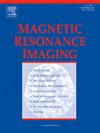Association of preoperative MRI with breast cancer treatment and survival: A single institution observational study
IF 2
4区 医学
Q2 RADIOLOGY, NUCLEAR MEDICINE & MEDICAL IMAGING
引用次数: 0
Abstract
Purpose
To evaluate the association between preoperative breast MRI with surgery type, contralateral cancer, recurrence-free (RFS) and overall survival (OS) in women with early-stage breast cancer.
Materials and methods
In this dual-affiliated single institution, retrospective study, we identified women with Stage I-III breast cancer diagnosed between 03/01/2013–03/31/2016 with available follow-up. Patient and tumor characteristics were recorded. Two cohorts were created based on the use of preoperative MRI(PMRI) versus no preoperative MRI(no-MRI) with Wilcoxon signed-rank and χ2 tests utilized for cross-group comparisons. Kaplan-Meier, log-rank and cox proportional hazards model analysis were used to compare RFS and OS in women with and without MRI.
Results
593 eligible patients were included [322(54.3 %) with PMRI, 271(45.7 %) no-MRI]. Mean patient age was younger (53.8 ± 11.8vs59.3 ± 12.6 years, p < 0.001) and dense breasts more common (51.6 %vs22.5 %, p < 0.001) in PMRI group. Seventeen bilateral cancers (5.3 %) were in PMRI [14/17(82.4 %) detected only on MRI] vs 10 (3.7 %) in no-MRI (p = 0.34). Molecular subtype distribution(luminal A:27.2 % vs 31.1 %; luminal B:51.8 %vs44.2 %; HER2:5.4 %vs4.2 %; triple negative:15.6 %vs20.5 %, p = 0.28) were similar in PMRI vs no-MRI groups. PMRI group had higher rates of cT2–4(45.0 %vs28.8 %, p < 0.001), cN+(27.3 % vs 18.1 %, p < 0.01), and neoadjuvant therapy (NAC, 41.3 % vs 18.8 %, p < 0.001). Total mastectomy(57.8 %vs51.3 %, p = 0.12), margin positivity(6.2 %vs7.4 %, p = 0.63), recurrence(10.2 %vs7.0 %, p = 0.20) and death rates(8.1 %vs7.7 %, p = 0.88) were similar in PMRI vs no-MRI. Mastectomy rates remained comparable after adjusting for age and breast density (p = 0.28). At median follow-up of 70 months(IQR, 64–70), time to recurrence was [PMRI:30(IQR, 19–47)vs no-MRI:23(IQR, 9–31) months, p = 0.04]. Contralateral cancers were identified sooner and more frequently in the no-MRI group [4(2.1 %)vs2(0.9 %) cancers, p = 0.32, 21 ± 20vs48 ± 13 months, p = 0.27]. There was no significant difference in 5-year RFS[hazard ratio(HR) 1.05, 95 %CI 0.67–1.67, p = 0.84] and OS[HR 0.94, 95 %CI: 0.51–1.74, p = 0.85] between PMRI and no-MRI groups even after adjusting for age, cancer type, breast density, cN stage, and NAC. which were different between two groups (RFS, HR 0.87, 95 %CI: 0.53–1.43, p = 0.57; OS, HR 0.78, 95 %CI: 0.40–1.52, p = 0.46). NHW patients had higher RFS compared to Black patients in PMRI group (HR 0.45, 95 % CI: 0.21–0.96, p = 0.04) in adjusted analysis.
Conclusions
Preoperative MRI utilization is not associated with improved surgical margin, 5-year RFS or OS in our cohort. This effect persisted after adjusting for patient age, tumor stage, cancer type, breast density and NAC. At post therapy surveillance, contralateral cancers are identified earlier and more frequently in the no-MRI group.
术前MRI与乳腺癌治疗和生存的关系:一项单机构观察性研究。
目的:探讨早期乳腺癌患者术前乳腺MRI检查与手术类型、对侧肿瘤、无复发(RFS)和总生存率(OS)的关系。材料和方法:在这项双附属单机构回顾性研究中,我们确定了2013年3月1日至2016年3月31日期间诊断为I-III期乳腺癌的女性,并进行了随访。记录患者及肿瘤特征。根据术前MRI(PMRI)和未术前MRI(no-MRI)的使用创建了两个队列,并使用Wilcoxon符号秩和χ2检验进行跨组比较。Kaplan-Meier、log-rank和cox比例风险模型分析用于比较接受和不接受MRI的女性的RFS和OS。结果:纳入593例符合条件的患者[322例(54.3% %)进行PMRI检查,271例(45.7% %)未进行mri检查]。患者的平均年龄更年轻(53.8 ± 11.8vs59.3 ± 12.6 岁,p )。结论:术前MRI使用与改善手术切缘、5年RFS或OS无关。在调整患者年龄、肿瘤分期、癌症类型、乳腺密度和NAC后,这种效果仍然存在。在治疗后的监测中,在非mri组中,对侧癌症被发现得更早、更频繁。
本文章由计算机程序翻译,如有差异,请以英文原文为准。
求助全文
约1分钟内获得全文
求助全文
来源期刊

Magnetic resonance imaging
医学-核医学
CiteScore
4.70
自引率
4.00%
发文量
194
审稿时长
83 days
期刊介绍:
Magnetic Resonance Imaging (MRI) is the first international multidisciplinary journal encompassing physical, life, and clinical science investigations as they relate to the development and use of magnetic resonance imaging. MRI is dedicated to both basic research, technological innovation and applications, providing a single forum for communication among radiologists, physicists, chemists, biochemists, biologists, engineers, internists, pathologists, physiologists, computer scientists, and mathematicians.
 求助内容:
求助内容: 应助结果提醒方式:
应助结果提醒方式:


